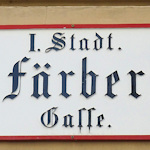
Vienna contains 23 municipal districts, each with its own individual character and flavor.
You can tell which district any Viennese location is in by looking at its four-number zip or postcode (German: Postleitzahl):
The first digit identifies the Austrian province or region with a 1 indicating Vienna (the city also happens to double as a province).
That initial number doesn’t map precisely to one of the nine Austrian provinces. So although all Vienna addresses have the 1, some nearby locations in the surrounding province of Lower Austria may share the same first digit as those in the capital.
The second and third digits identify the relevant city district (German: Bezirk) in Vienna. In our example, 07 is – surprise! – the 7th district.
The fourth number is, um, I don’t know. It’s nearly always 0, and I think any other number indicates some kind of post office location. You may also find some unique postcodes for specific institutions that break the rules.
The 23 districts
Anyway, these are the codes and names for the 23 districts…
The first district
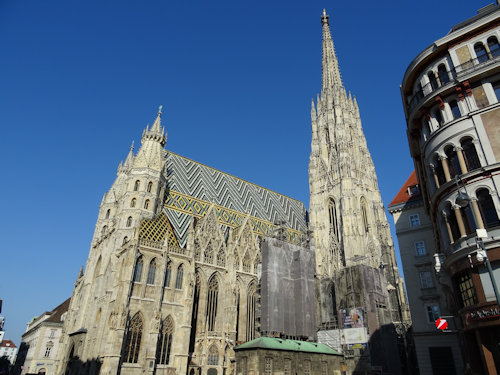
(Stephansdom dominates the centre of the first district)
- 1010 – the 1st district (Innenstadt or Innere Stadt). That’s the very center of town and home to many of Vienna’s historical attractions, the most prestigious addresses, and the highest rents. The area roughly equates to the city as it was before the fortified walls came down in the 19th century.
Districts surrounding the centre
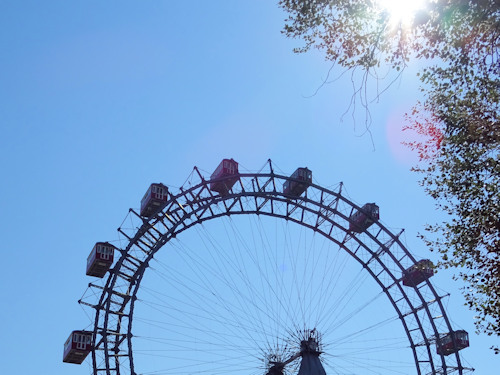
(The Riesenrad in the second district)
- 1020 – the 2nd district (Leopoldstadt). Opposite the first district on the other side of the Donaukanal arm of the Danube. Notable for the huge Prater park area, which includes such delights as the huge funfair, Madame Tussauds, the national stadium and, most importantly, the iconic Riesenrad Ferris wheel.

(The Kunst Haus Wien in the third district)
- 1030 – the 3rd district (Landstraße). Many people arrive in this district on a direct train from the airport. Hosts two famous ends of the historical spectrum: the 18th-century Belvedere palaces (now prestigious art museums) and two 20th-century buildings by Friedensreich Hundertwasser (the Hundertwasserhaus and the Kunst Haus Wien).
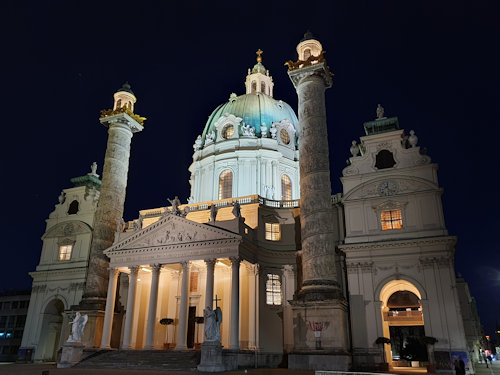
(The Karlskirche in the fourth district)
- 1040 – the 4th district (Wieden). Perhaps best known for the part closest to the centre, which has the magnificent Karlskirche church and panorama terrace overlooking Karlsplatz square. Also home to Bobby’s: the longstanding UK/US grocery store in Vienna.

(The Chocolate Museum recently moved to the fifth district)
- 1050 – the 5th district (Margareten). A mixed island of a district with few of the tourist attractions you might find elsewhere. Borders the River Wien and one end of the large Naschmarkt open-air market.
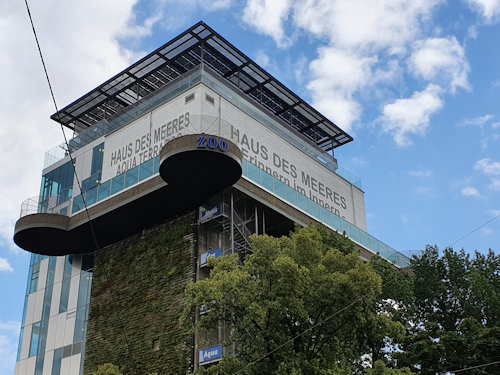
(The Haus des Meeres in the sixth district)
- 1060 – the 6th district (Mariahilf). Popular area for holiday apartments, given the rather vibrant, trendy nature of the district and plentiful bars and restaurants. Home to the huge Naschmarkt open-air market, the Haus des Meeres aquarium and zoo, Vienna’s main shopping street (Mariahilfer Straße) and the Haydnhaus museum.
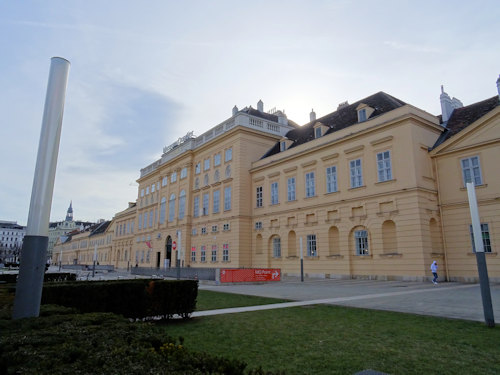
(Main entrance to the MQ in the 7th district)
- 1070 – the 7th district (Neubau). Another popular location for apartments for the same reason as above. The city centre side has the MuseumsQuartier complex (MQ), an area dedicated to culture with museums, exhibitions, cafés, events, shops, and a general contemporary urbanite vibe (not sure what that means but it sounds pretty apt)
- 1080 – the 8th district (Josefstadt)
- 1090 – the 9th district (Alsergrund)
The outer districts
- 1100 – the 10th district (Favoriten)
- 1110 – the 11th district (Simmering)
- 1120 – the 12th district (Meidling)
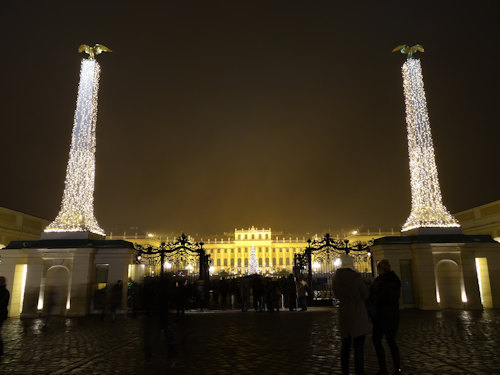
(Schönbrunn palace in the thirteenth district)
- 1130 – the 13th district (Hietzing). Of most interest to visitors as the location of Schönbrunn: an Imperial palace and a surrounding park with a zoo, gardens, maze area, carriage museum, children’s museum and other delights. Also has the Klimtvilla and most of the huge Lainzer Tiergarten game reserve.

(The Rapid stadium in the fourteenth district)
- 1140 – the 14th district (Penzing). A long district to the west that stretches out into the Vienna woods. The edge closest to the centre has the Technisches Museum and elsewhere you’ll find echoes of architect Otto Wagner in, for example, what is now the Ernst Fuchs Museum. The district is also home to Austria’s biggest football club: Rapid Wien with the Allianz Stadion.
- 1150 – the 15th district (Rudolfsheim-Fünfhaus)
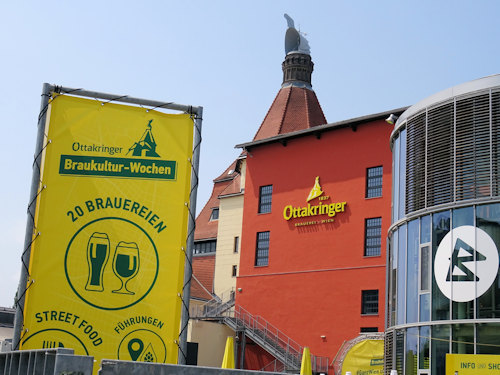
(The brewery in the sixteenth district)
- 1160 – the 16th district (Ottakring). A largely working-class area until you get out into the surrounding hills. Home to the Ottakringer brewery, which also hosts several popular events and festivals.
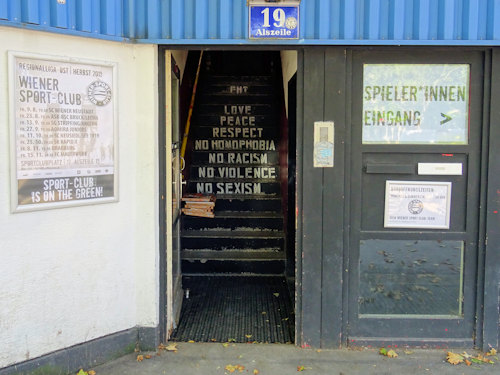
(The Wiener Sportclub football tradition lives in the seventeenth district)
- 1170 – the 17th district (Hernals). Another western district that extends out into the Vienna woods and hills. Also home to the iconic Wiener Sportclub football club: its remarkable family-friendly atmosphere attracts many football tourists for live games.
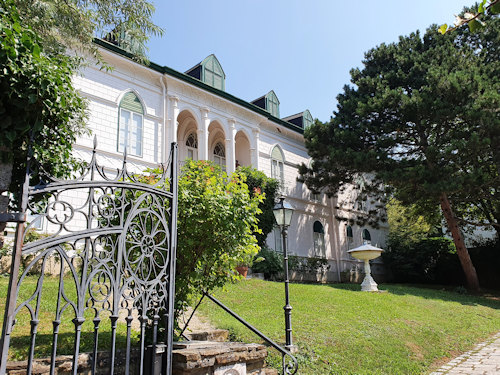
(The Geymüllerschlössel in the eighteenth district)
- 1180 – the 18th district (Währing): like its neighbour Döbling (see below), a relatively upmarket district that slips gently into green suburbs and a village-like ambience at the edges. Not a place you find many tourists, but home to, for example, the Geymüllerschlössel, where you can experience the Biedermeier architectural & design era. The classical AMADEUS Festival Vienna also takes place in Währing.
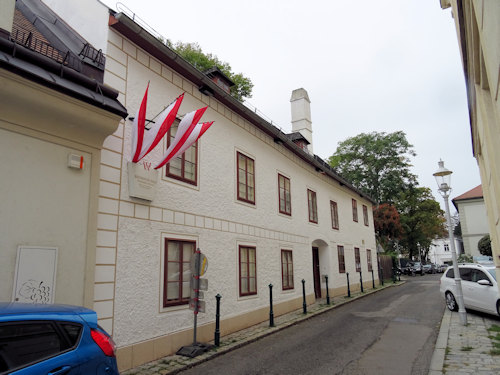
(The Beethoven Museum in the nineteenth district)
- 1190 – the 19th district (Döbling). One of the more upmarket districts and the first address when it comes to Vienna’s Heuriger wine taverns since it stretches out into hills and vineyards. Also has strong connections to Beethoven, who wrote his Heiligenstadt Testament here. Various Beethoven sites include the city’s main Beethoven museum.
- 1200 – the 20th district (Brigittenau)
- 1210 – the 21st district (Floridsdorf – one of only two districts north of the Danube river)
- 1220 – the 22nd district (Donaustadt – the other district north of the Danube)
- 1230 – the 23rd district (Liesing)
Which district am you in?
You can always tell which district you’re in by looking at the nearest street sign – the street name is nearly always preceded by the district number. Here we see that Rotenturmstraße is in the first district:
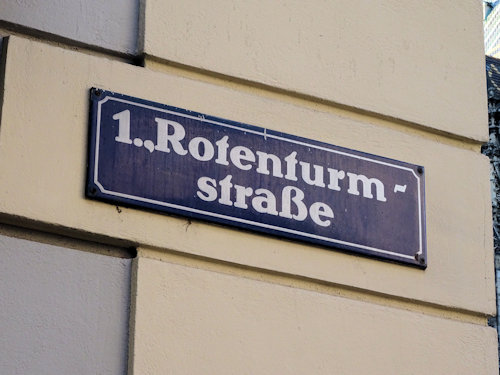
(Rotenturmstraße leads away from the cathedral in the first district)
While this number may not mean much to your average visitor, it’s important to the locals. You are, after all, where you live. A noble address in the 13th, 19th or – gasp! – first district will set you back many thousands of dollars more than the same house in the less salubrious alternatives.
Be careful, though. Don’t confuse the district number with the house number. In the two photos below, the first is a street sign indicating you’re on Stephansplatz in the first district. The second is a house number, indicating that you’re at house number 8 on Stephansplatz.
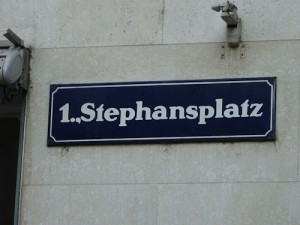
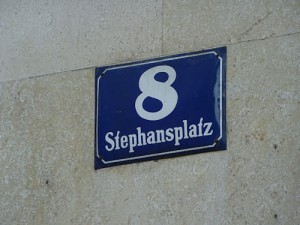
(One number is the district, one number the house address)
The difference is in the formatting of the number. The dot/period after the number tells you it means a district. In German, the dot is used as shorthand to show an ordinal number.
So where English has 1st, 2nd, and 3rd etc., German uses 1., 2. and 3. for a sequence. So 1. on the top sign means first, whereas an 8 on the bottom sign means the number eight.
